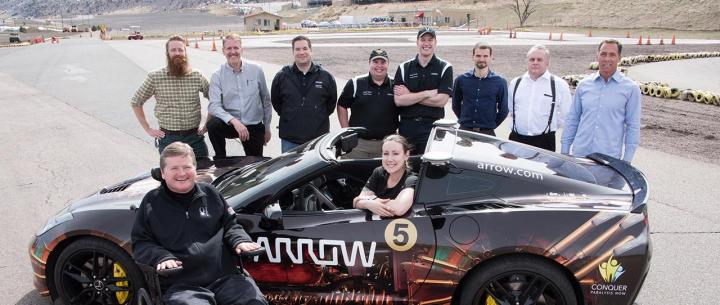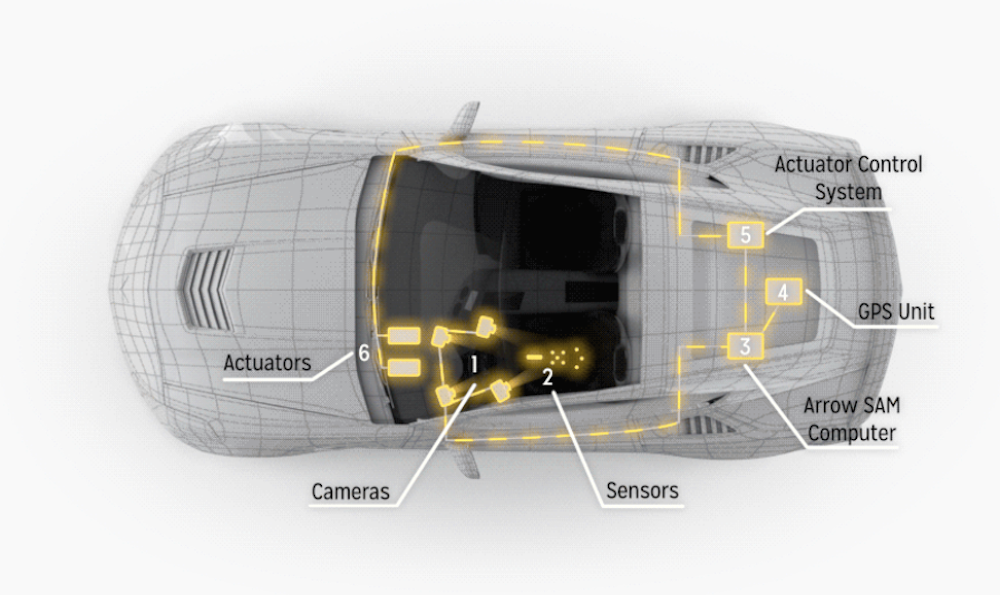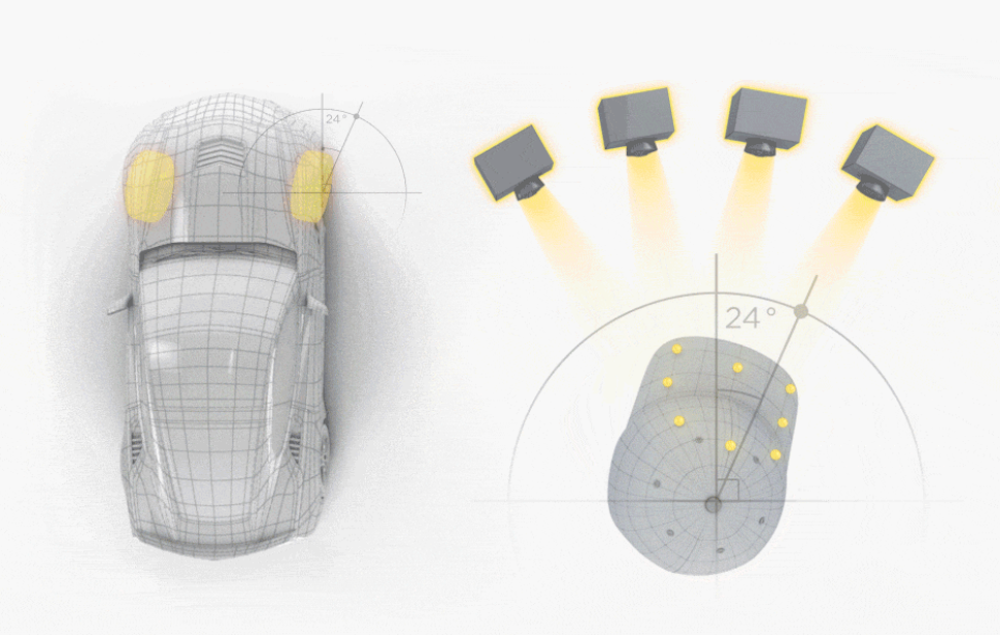
Arrow’s team of engineers modified a Corvette Stingray that is controllable by Schmidt using just small movements of his head. Infrared cameras track Schmidt’s inputs by way of a baseball cap fitted with reflective data points, similar to how motion capture systems record 3D movement for use in computer animation.

By turning his head side-to-side, Schmidt engages the servos fitted in the steering wheel, as you might expect. Tilting his head back accelerates the car while braking is controlled by a mouth-held sensor. All the data is sent to a trunk-mounted computer before the info is sent to the actuators, taking just a hundredth of a second for the whole process.
If there’s a moment where motion tracking goes wrong, or if Schmidt heads off the track for any reason, a redundant GPS-guided system will take over.
Arrow’s modified Corvette allowed Schmidt to hit speeds of around 100 mph at the famous Indianapolis motor speedway, an impressive speed, given how Schmidt had to learn a whole new method of driving.
Schmidt and Arrow hope to have a system sophisticated enough to take things off the track and put Sam back on the open road within the next five years. Arrow’s systems, augmented by the advances in vehicle autonomy we’ve been seeing, should be able to return to Schmidt and similarly afflicted people a freedom long thought to be entirely lost to them.




